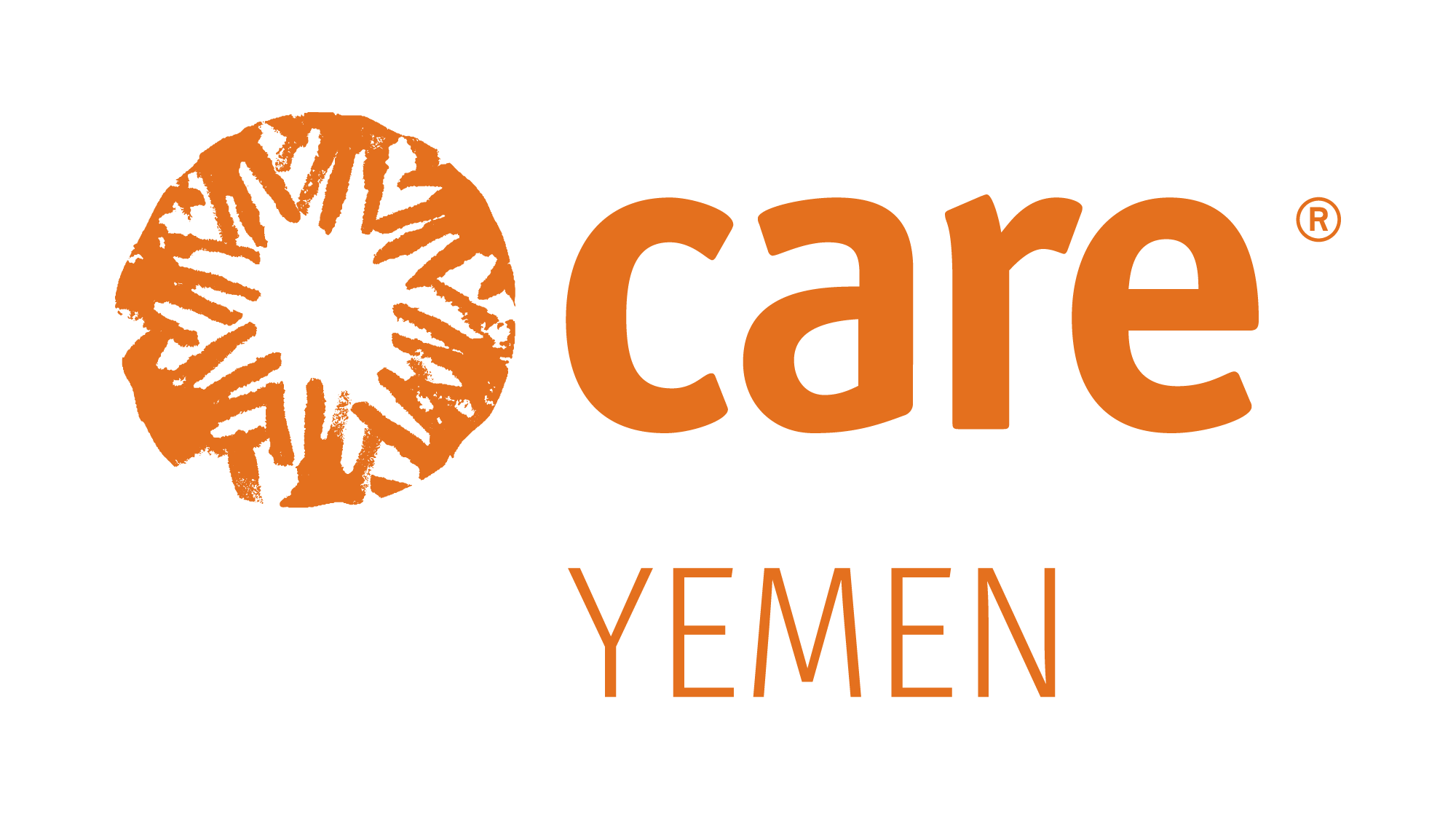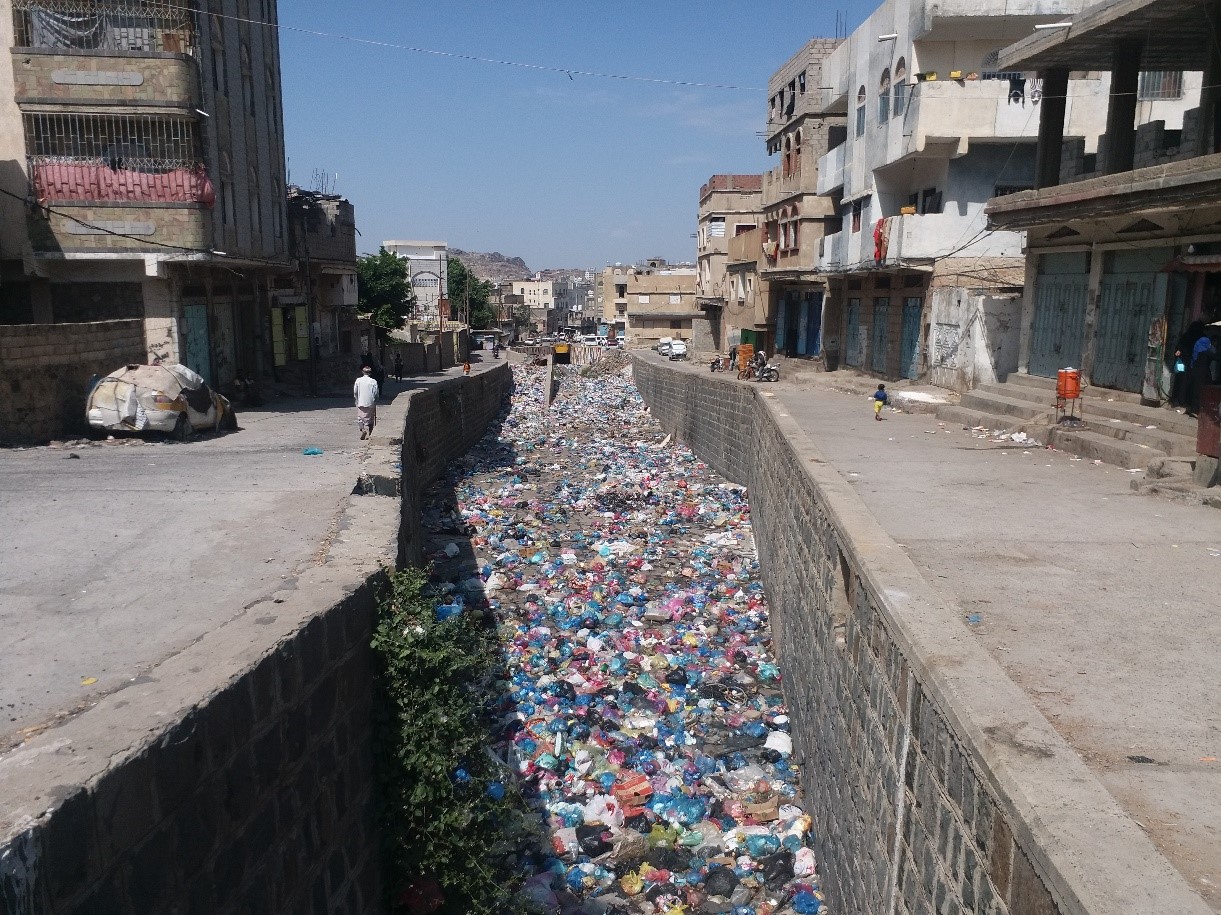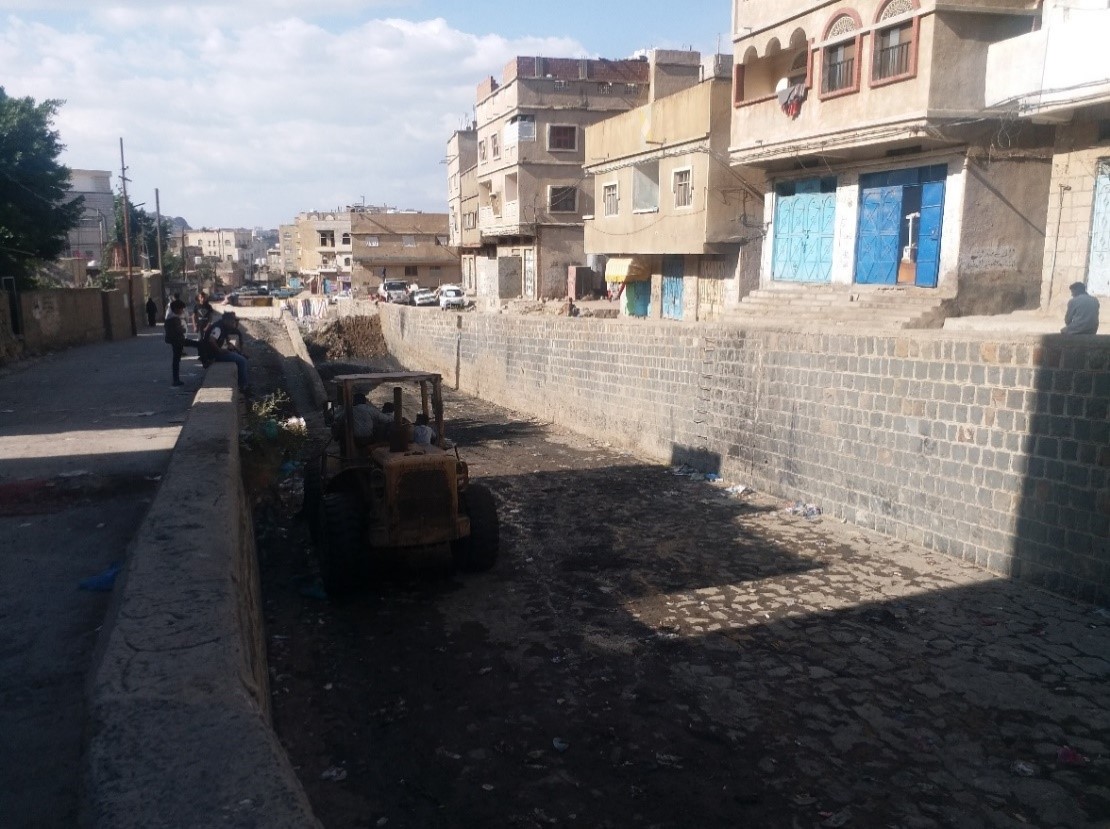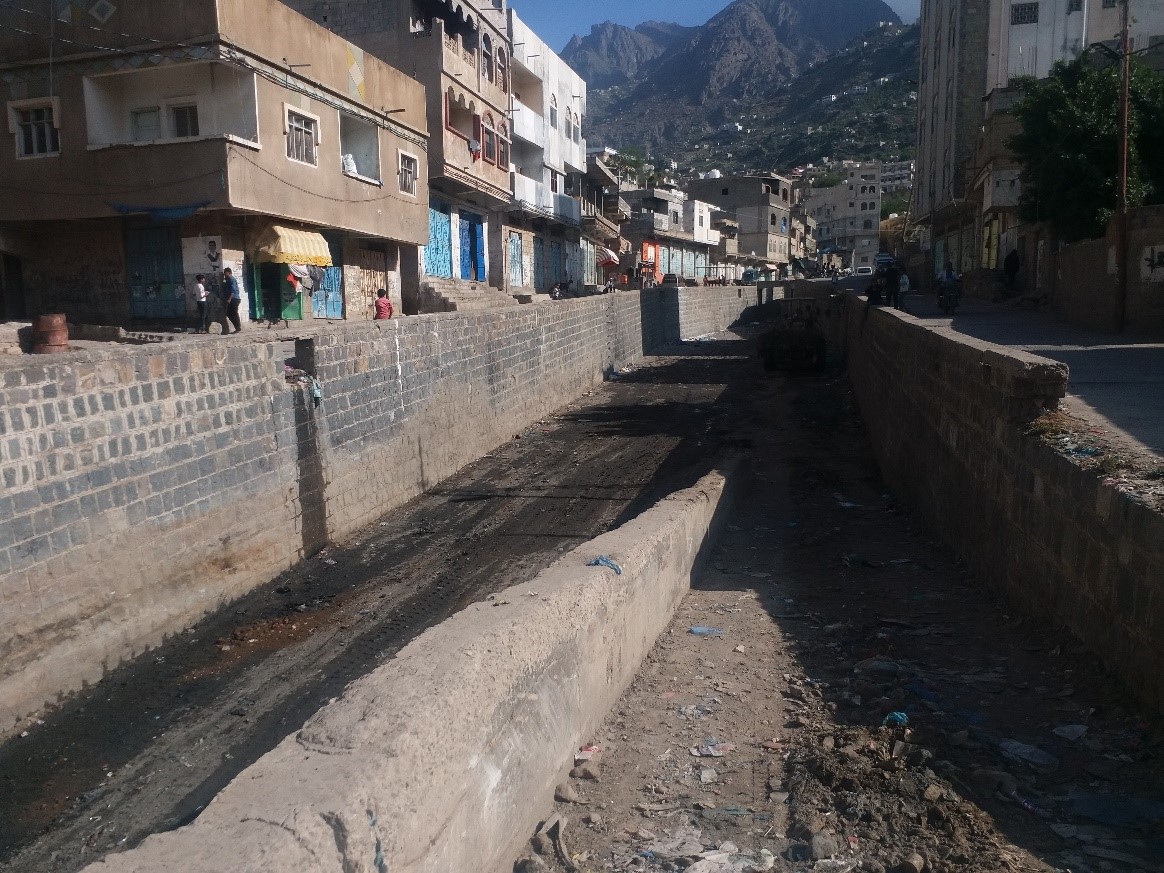Taiz is the most densely populated city in Yemen, and has been heavily affected by the conflict since 2015. The districts of Mudhaffar, Al-Qahrah and Salah are in the middle of the city. The population of these three districts in particular is deprived of many basic services, such as solid waste and rubbish collection, as these areas are home to approximately half a million people who generate thousands of tons of waste every day. Due to the conflict in Yemen and the collapse of services, the city has become essentially a large landfill, with rubbish accumulated throughout the streets and water canals.
Wadi Al-Madam is a neighbourhood of Al-Mudhafar District where Muhammad Nasher lives. “The rubbish has been piled up for years,” says Muhammad. “One cleaner cleaned it up six months ago as much as he could, but he just collected the light rubbish. “Imagine how a large amount of rubbish has been there mixed with rainwater, sewage and dirty water in the canal for years, with diseases spreading. Many people in the two districts have been infected with dengue fever and cholera.”
“I was extremely affected because I’m a teacher and my salary is not enough to cover our household needs,” he adds. “My children fell sick with diarrhoea and fever at least once every two weeks, and my youngest daughter always had infections.” Each day, Muhammad had to take at least one of his children to the doctor, something that he could not afford. He was heavily indebted to the pharmacy in his neighbourhood: “The diseases have exhausted our bodies and our pockets.”
Thanks to funding provided by EU humanitarian aid, CARE was able to intervene and carry out the removal of solid waste and rubbish from the streets and water canals.
“The cleaning work continued for five days. During that period, 238 trucks of rubbish, approximately 1,904 tons, were removed,” says Ammar Khudair, the supervisor of the hygiene campaign.




